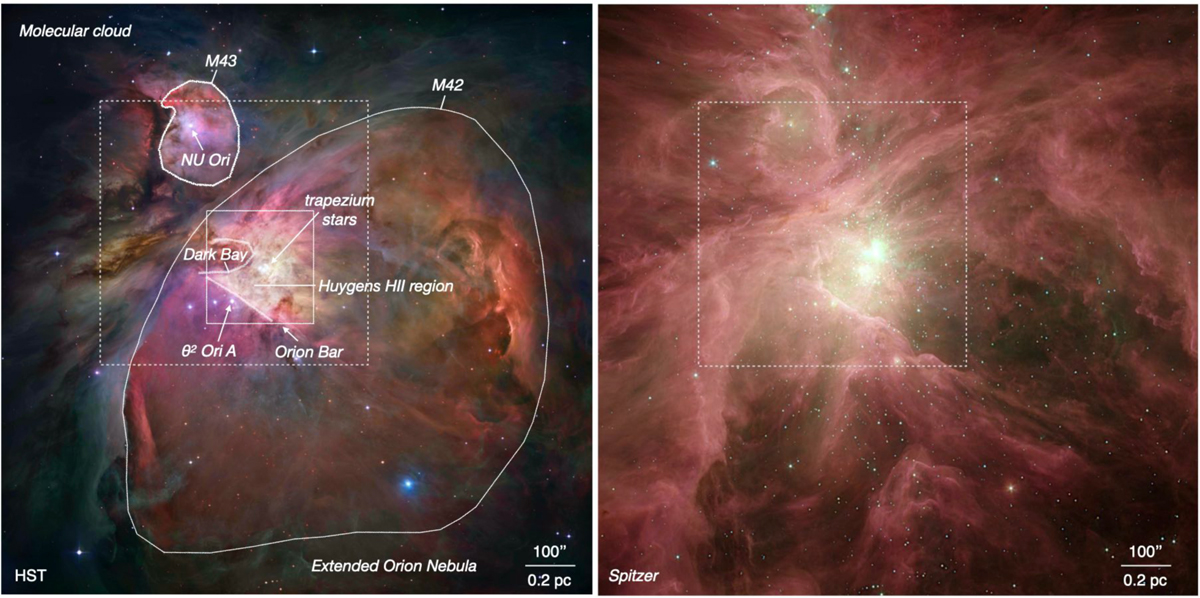Fig. 1

Download original image
Composite color Hubble (left) and Spitzer (right) views of M42 and M43 in the Orion Nebula complex. The solid white lines delineate the shells of M42 and M43, the Bar, the Huygens HII region, and the Dark Bay. The Huygens Region corresponds to the brightest parts of the Orion Nebula. The Dark Bay shows that there are regions of high optical depth between the observer and the ionized gas. Foreground depressions of visible light such as the Dark Bay are globally known as the Veil (Abel et al. 2019; Pabst et al. 2019). Arrows indicate the positions of the most massive stars within each region: Trapezium stars in M42 and NU Ori in M43. The position of the θ2 Ori A star near the center of the Bar is also indicated. The areas where the JWST observations were obtained are the Bar, north of the Dark Bay, and north of M42 and M43 as presented in Fig. 2. The large dashed rectangle shows the limits of the upper panel of Fig. 2. The image credits for Hubble are as follows: NASA, ESA, M. Robberto (Space Telescope Science Institute/ESA) and the Hubble Space Telescope Orion Treasury Project Team. The image credits for Spitzer are as follows: NASA/JPL-Caltech/Univ. of Toledo. The wavelengths of the composite color images correspond to 435, 555, 658, 775 and 850 nm for Hubble and 3.6, 4.5, 5.8 and 8 µm for Spitzer.
Current usage metrics show cumulative count of Article Views (full-text article views including HTML views, PDF and ePub downloads, according to the available data) and Abstracts Views on Vision4Press platform.
Data correspond to usage on the plateform after 2015. The current usage metrics is available 48-96 hours after online publication and is updated daily on week days.
Initial download of the metrics may take a while.


